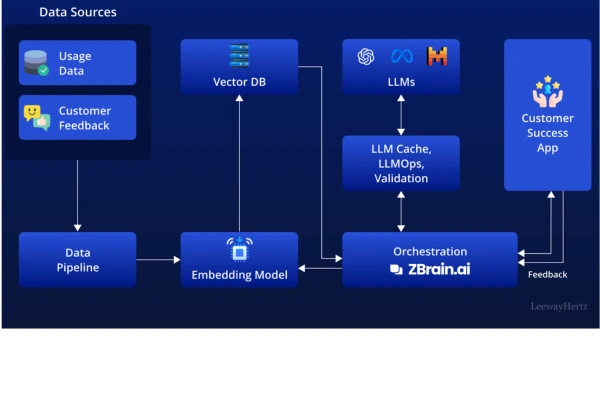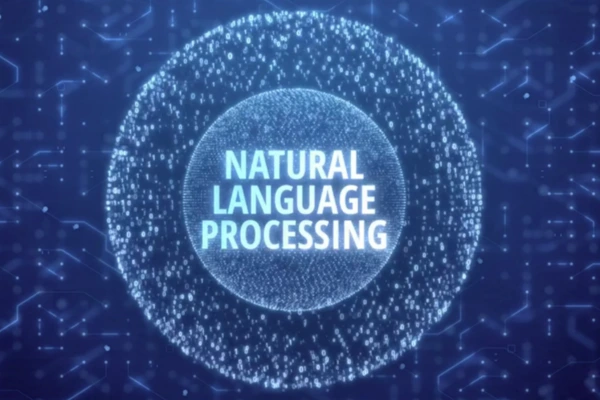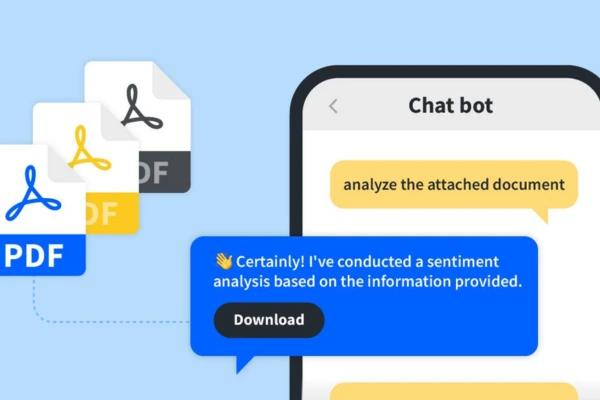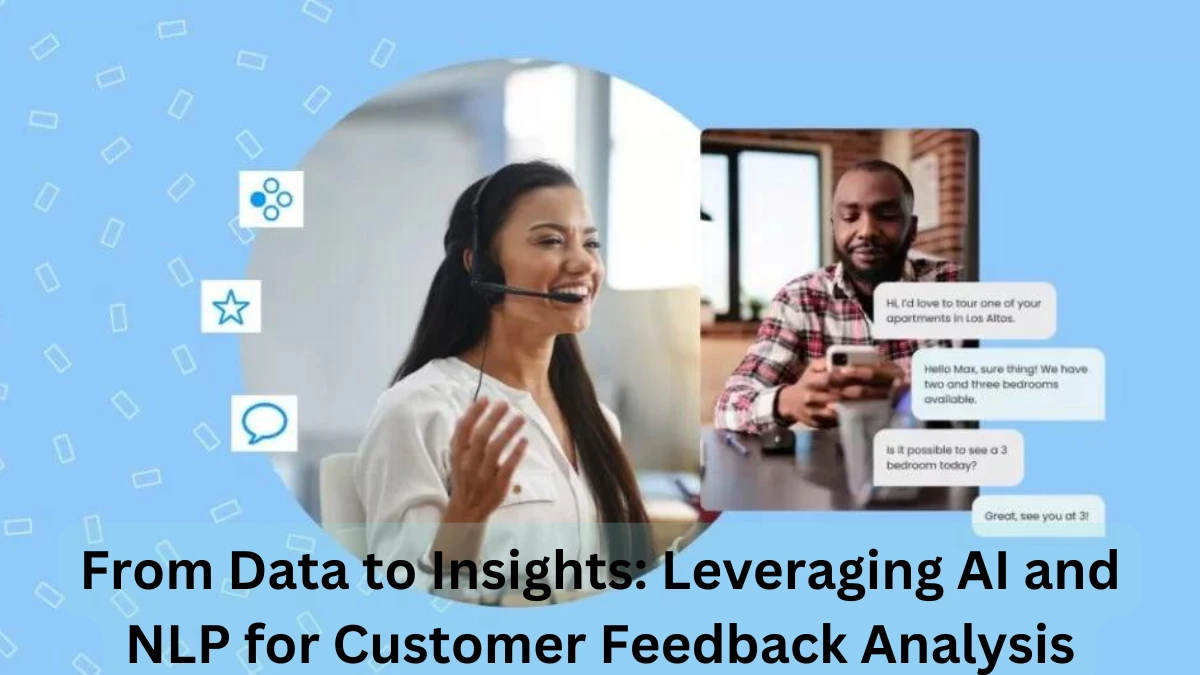Table of Contents
From Data to Insights: Leveraging AI and NLP for Customer Feedback Analysis is revolutionizing how businesses process and understand feedback. By transforming customer feedback into actionable insights, AI helps companies make data-driven decisions. At the heart of this transformation is Natural Language Processing (NLP), which decodes customer sentiment with unprecedented accuracy. Additionally, the real-time analysis enabled by AI allows businesses to improve response times and customer satisfaction. Looking ahead, future trends in AI and NLP promise even more personalized interactions and enhanced customer experiences.
How AI Transforms Customer Feedback into Actionable Insights
Businesses today are flooded with customer feedback across various platforms, from surveys to social media. The challenge lies in turning this raw feedback into meaningful, actionable insights. AI has emerged as a game-changer in this field, enabling companies to efficiently analyze massive amounts of data, uncover trends, and make informed decisions that directly influence business growth.

The Importance of Customer Feedback in Business Strategy
Customer feedback is the lifeblood of any successful business strategy. It provides a direct line to the customer’s voice, helping companies understand their needs, preferences, and pain points. Ignoring this feedback can lead to missed opportunities and dissatisfied customers, while acting on it can drive customer loyalty and product improvement. With AI, businesses can now scale their feedback analysis and stay ahead in identifying market demands and improving the overall customer experience.
From Data to Insights: Leveraging AI and NLP for Customer Feedback Analysis
The advent of AI-powered tools has transformed the way feedback is analyzed. Tools like MonkeyLearn, Lexalytics, and IBM Watson are designed to sift through vast amounts of customer feedback, categorize it, and highlight key sentiments. These tools not only detect positive and negative emotions but also track customer satisfaction trends over time. By automating this process, AI enables businesses to focus on strategy and action rather than manual data sorting.
Read More “From Sci-Fi to Reality: The Evolution of Artificial Intelligence“
Read More “Unleashing the Power of Artificial Intelligence: Exploring the Possibilities“
Read More “ Jio Coin Price Prediction: How Much Will Reliance’s New Cryptocurrency Be Worth in 2025? How To Buy It?“
Automation and Scalability in Feedback Analysis
One of AI’s greatest advantages is its automation and scalability in feedback analysis. Traditional methods of feedback collection and interpretation are often slow, manual, and prone to human error. AI, however, can process thousands of customer responses in seconds, identifying patterns and generating insights. This scalability ensures that even small businesses can analyze large volumes of feedback without investing significant time or manpower.
The Role of Natural Language Processing (NLP) in Understanding Customer Sentiment
At the core of AI-driven feedback analysis is Natural Language Processing (NLP). NLP allows machines to understand, interpret, and generate human language in a way that’s valuable for businesses. This capability enables companies to make sense of unstructured feedback data—like open-ended survey responses, reviews, or social media posts.

What is NLP? An Overview
Natural Language Processing is a branch of artificial intelligence that deals with the interaction between computers and human language. In feedback analysis, NLP helps break down text into understandable data points. It’s capable of identifying keywords, emotions, and even subtle linguistic patterns. Through NLP, businesses can extract valuable information from written customer feedback, turning complex language into clear, actionable data.
Sentiment Analysis Using NLP
One of the key applications of NLP is sentiment analysis. This process involves determining the emotional tone behind customer feedback, which can range from highly positive to extremely negative. NLP algorithms can detect not only the sentiment but also the intensity of emotions, offering companies a nuanced understanding of customer reactions. This insight can be used to improve products, services, and overall customer satisfaction.
NLP Algorithms in Action
NLP relies on sophisticated algorithms to process text data. Common algorithms include machine learning models like Naive Bayes, Decision Trees, and deep learning techniques such as transformers. These algorithms work by analyzing language structure, context, and meaning to identify trends and anomalies within customer feedback.
Named Entity Recognition (NER) and Its Role in Feedback Analysis
A powerful NLP technique is Named Entity Recognition (NER). NER identifies specific entities—such as product names, locations, or brands—within the text. For businesses, NER is crucial for pinpointing exact issues customers mention. For example, if several reviews mention a product by name, NER helps categorize these reviews for targeted analysis, enabling companies to address specific feedback about individual products or services.
Key Benefits of Using AI for Real-Time Customer Feedback Analysis
Leveraging AI for real-time customer feedback analysis offers numerous benefits for businesses, allowing them to stay ahead of customer expectations and respond swiftly to concerns. By using AI, companies can analyze vast amounts of feedback in real-time, gaining valuable insights that lead to better decision-making and improved customer experiences.
From Data to Insights: Leveraging AI and NLP for Customer Feedback Analysis : Improved Response Time and Customer Satisfaction
One of the most significant advantages of AI-driven feedback analysis is the improved response time. In the past, businesses had to rely on manual methods to sift through feedback, often leading to delayed responses. With AI, feedback can be analyzed in real-time, allowing companies to quickly identify and address issues. This timely action not only resolves problems faster but also enhances customer satisfaction, as customers appreciate swift responses and solutions to their concerns.

Data-Driven Decision Making
Another key benefit of AI in customer feedback analysis is its ability to enable data-driven decision making. AI tools can process feedback data more accurately and efficiently than humans, identifying trends, common complaints, and areas for improvement. This provides businesses with reliable, actionable insights that they can use to make informed decisions about product development, marketing strategies, and customer service improvements. Instead of relying on guesswork, companies can base their decisions on accurate customer feedback data.
Future Trends in AI and NLP for Enhancing Customer Experience
As AI and NLP technologies continue to evolve, their potential to transform customer experience is becoming increasingly apparent. The future holds exciting developments in how businesses interact with their customers, making services more personalized and efficient.
AI and NLP in Personalized Customer Interactions
Personalization is key to customer satisfaction, and AI combined with NLP is at the forefront of revolutionizing this aspect of business. AI-driven personalization allows companies to tailor their communications, products, and services to individual customer preferences. By analyzing customer feedback and behavior in real-time, AI can predict what customers want and deliver personalized content or solutions, creating more engaging and satisfying interactions. This level of personalization helps build strong customer loyalty and long-lasting relationships.
AI Chatbots and Virtual Assistants
AI chatbots and virtual assistants are increasingly playing a vital role in both customer feedback analysis and service. These tools can handle customer inquiries, gather feedback, and provide instant responses around the clock. More advanced virtual assistants are now capable of interpreting customer sentiment, making them invaluable for businesses that want to automate customer service while maintaining a human-like interaction. As chatbot technology improves, their role in customer experience management will only grow, offering faster, more personalized, and efficient service.
Conclusion
In today’s digital age, leveraging AI and NLP for customer feedback analysis is essential for staying competitive. Don’t wait—start utilizing AI-powered tools today to transform your business.
Ready to improve customer feedback analysis? Explore AI and NLP solutions to enhance your customer experience today!
How can AI and NLP be used for customer feedback analysis?
AI and NLP can be used to automatically process large volumes of customer feedback data, extract key themes and sentiments, and identify trends and patterns.
What are the different sources of customer feedback data?
Common sources include surveys, social media comments, reviews, support tickets, and customer interviews.
What is sentiment analysis, and how is it used in customer feedback analysis?
Sentiment analysis is the process of identifying the emotional tone of text data. It helps to understand whether customers are satisfied or dissatisfied with a product or service.
What is topic modeling, and how can it be used to identify key themes in customer feedback?
Topic modeling is a technique that identifies underlying topics or themes within a collection of documents. It can help to uncover common concerns and suggestions.
How can machine learning algorithms be used to classify customer feedback into different categories?
Machine learning algorithms can be trained on labeled data to automatically classify customer feedback into categories such as “positive,” “negative,” or “neutral.”







Greetings,
We’re thrilled to invite you to join hands with Bookspotz (https://www.bookspotz.com/), one of the leading platforms for sharing ideas, stories, and brands with a highly engaged audience.
We are now offering guest post opportunities for paid users, starting at just $150. This is your chance to:
– Promote your work, idea, company, or brand video through a compelling article on our high-traffic site.
– Gain exposure to a broad and diverse audience who are eager to explore new and exciting content.
If you’re interested in contributing and showcasing your expertise or promoting your brand on Bookspotz, we’d love to hear from you. Simply send your query or proposal to srinidhi000@gmail.com.
Please note: This email is sent from a no-reply address (no-reply@bookspotz-publication.com), so kindly direct your response to the above-mentioned email.
We look forward to collaborating with you and helping your ideas shine!
Cheers,
The Bookspotz Team
https://www.bookspotz.com/